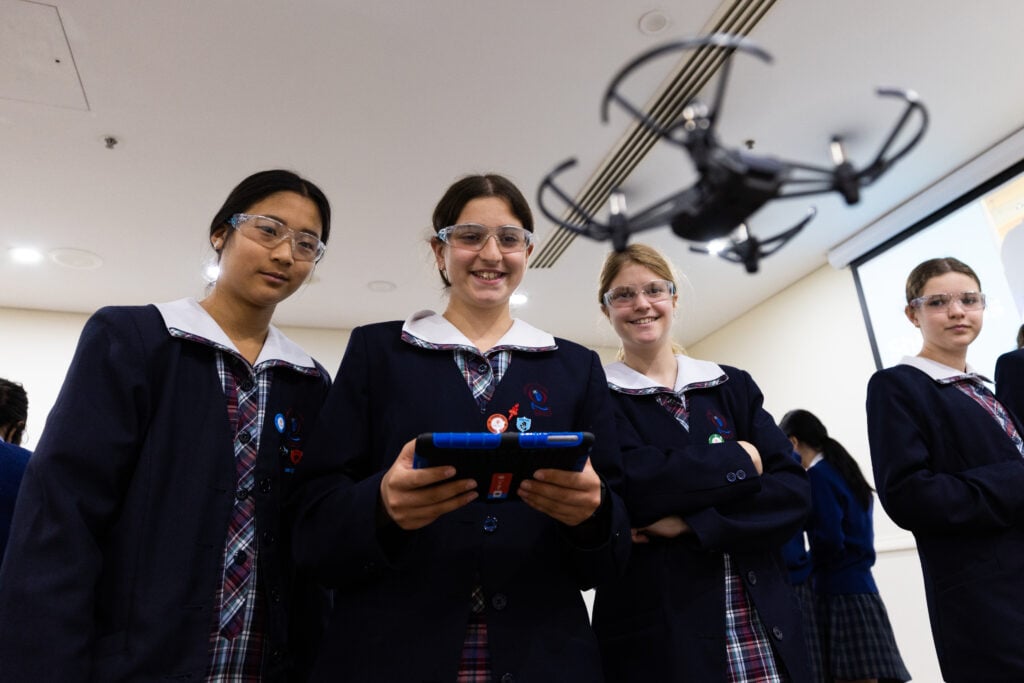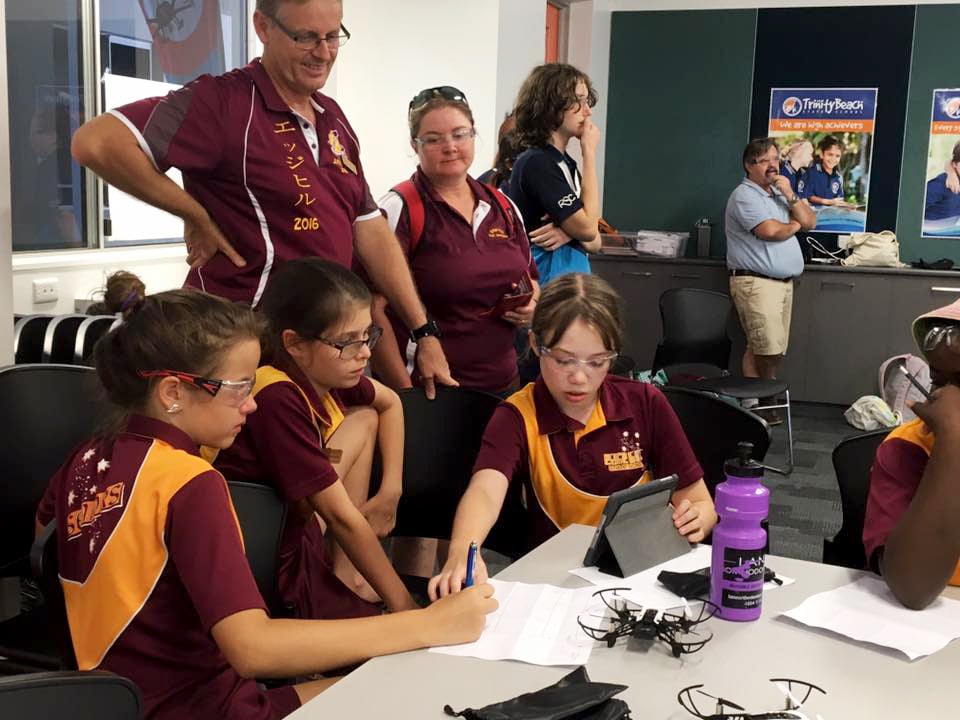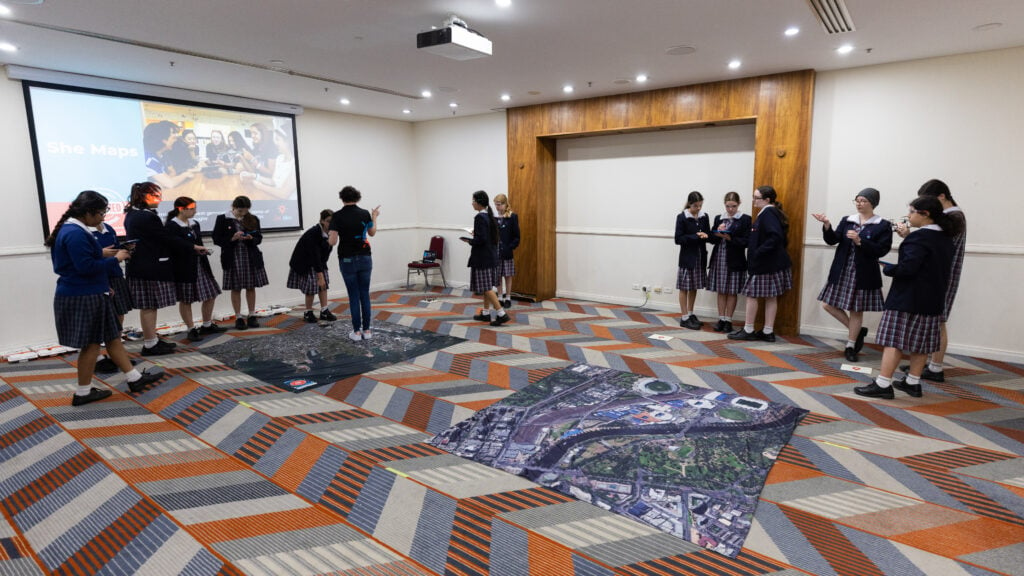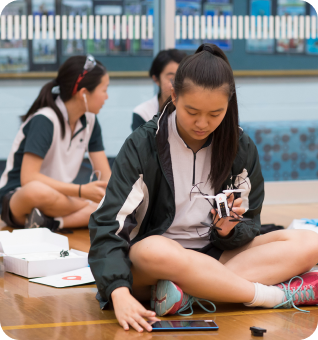Drones are a powerful tool for high school students to learn mathematical skills in a hands-on, practical, and engaging way. Recent studies have shown that the maths outcomes for Australian school students are declining. One reason that some students struggle to engage with maths is due to its abstract nature. They struggle to relate to or visualise complex mathematical ideas. Recognising this, schools and teachers are looking for opportunities to better engage their students in mathematics in ways that reflect real-world experiences both now and in the future.
Australia’s national curriculum sets out to ensure that students not only understand mathematical concepts, but that they have the skills to demonstrate their mathematical understanding. This is why it is so important to ensure that maths lessons taught in the classroom provide opportunities for students to be ‘hands-on’ and apply their knowledge through doing. Enter drones.
Using Drones to Teach Maths with Real-world Learning Scenarios
Using real-world scenarios that require students to investigate different ways to solve a problem is an effective way to engage students in mathematical learning. Knowing how to use a specific mathematical formula to work out the answer to a test question is important, but in today’s world, students need to be problem solvers, creative thinkers, and innovators. They need to be able to make connections between the different branches of mathematics and understand the way that different mathematical principles apply to different situations.
When teaching with drones, its not about the drones themselves. It’s about the authentic, real-world mathematical applications that using drones offers.
How many times have students asked, ‘when will I ever use this in real life?’. Applying mathematical knowledge to design flight paths, program and fly drones, provides this real-life scenario. With the drone industry expanding the rate that it is, we can confidently assume that drones will be part of all our students’ futures.

Using Drones to Teach Geometry
There are several ways that drones can be used to teach mathematical skills.
For example, drones can be used to teach geometry. This is done by having students program a drone to fly specific shapes and angles. To do this, students need to apply their knowledge of angles to calculate the turns and distances the drone will fly to create the desired shape. What better way to show the real-world applications of Pythagoras’s theorem than to have students solve measurement problems involving unknown lengths of right-angle triangles for a drone mission!!
The best part is that She Maps have done all the planning work for you. Check out this Healthcare in the Himalayas unit of work, complete with Curriculum Mapping, Lesson Sequence, Student Activity Sheets, StoryMap and Assessment Rubrics!
Using Drones to Teach Measurement
Drones can be used to teach measurement. Using drones, students can measure vertical and horizontal distances. They can also use drones to measure the distance between two points, the height of a building, or the angle of a slope. This can help students understand concepts such as perimeter, area, and volume. Make the learning more exciting by presenting students with a drone mission, such as delivering supplies or surveying an area. Students can then use appropriate metric units to solve measurement problems involving the drone mission. They will be so engaged on the mission that they won’t even realise they are doing maths!
Take some time to discuss the real-world applications of drone-based measurement, such as surveying, mapping, and disaster response. This can help students understand the importance of measurement in various fields, and how technology can be used to make measurements more accurate and efficient.

Using Drones to Teach Data Representation and Interpretation
One of the reasons that drones are being used extensively in different fields is because of how effectively they can collect data. This is due to the significant improvements in camera and AI technology in recent years. Drones can be used to teach data analysis by having students use the drone to collect data such as images, temperature, or altitude. Students can then analyse and represent the data by creating an infographic using mathematical concepts like mean, median, and standard deviation.
The good news is that you can create a real-world data collecting scenario in your classroom using one of these image mats. These aerial image mats are great for creating real-world scenarios, where students can fly their drone over the mat to collect image data for a specific purpose. For example, students could collect data on how much open space is available in a geographical location and analyse that data to propose the best location for a new community park.

Using Drones in the Classroom to Teach Maths
Teaching with drones does not mean that you need to purchase expensive outdoor drones. We always recommend that people fly with the smallest drone that will suit the purpose. Microdrones can be used to simulate a range of real-world situations and as a bonus, multiple people can be flying at the same time, and they can be flown indoors! This makes microdrones the perfect fit for using in maths lessons. Click here to see what is included in our Microdrone Class Kits.
Drones can improve learning by bringing mathematical concepts to life. Overall, using drones to teach mathematical skills can make learning more engaging and hands-on for students, while also helping them to develop important critical and creative thinking, and problem-solving skills. It can also help students understand real-world applications of math concepts.
If you would like to learn more about using drones in the classroom, click here.








